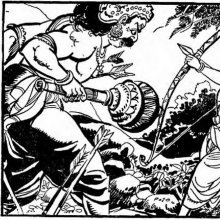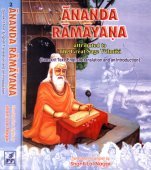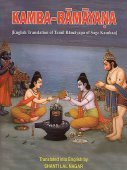Khara, Khāra: 42 definitions
Introduction:
Khara means something in Buddhism, Pali, Hinduism, Sanskrit, Jainism, Prakrit, Marathi, Hindi, biology. If you want to know the exact meaning, history, etymology or English translation of this term then check out the descriptions on this page. Add your comment or reference to a book if you want to contribute to this summary article.
Images (photo gallery)
In Hinduism
Ayurveda (science of life)
Nighantu (Synonyms and Characteristics of Drugs and technical terms)
Source: WorldCat: Rāj nighaṇṭuKhara (खर) is another name for Yavāsa, a medicinal plant identified with Alhagi pseudalhagi, synonym of Alhagi maurorum (“camelthorn”) from the Fabaceae or legume family of flowering plants, according to verse 4.44-46 of the 13th-century Raj Nighantu or Rājanighaṇṭu. The fourth chapter (śatāhvādi-varga) of this book enumerates eighty varieties of small plants (pṛthu-kṣupa). Together with the names Khara and Yavāsa, there are a total of twenty-two Sanskrit synonyms identified for this plant.
Veterinary Medicine (The study and treatment of Animals)
Source: Shodhganga: Portrayal of Animal Kingdom (Tiryaks) in Epics An Analytical study1) Khara (खर) (lit. “one who speaks roughly”) is a synonym (another name) for the Crow (Kāka), according to scientific texts such as the Mṛgapakṣiśāstra (Mriga-pakshi-shastra) or “the ancient Indian science of animals and birds” by Hamsadeva, containing the varieties and descriptions of the animals and birds seen in the Sanskrit Epics such as the Ramayana and Mahabharata.
2) Khara (खर) also refers to the Asiatic Wild ass (Equus hemionus).
Unclassified Ayurveda definitions
Source: Wisdom Library: Āyurveda and botany1) Khara (खर) is a Sanskrit word referring to the animal “donkey/ass”. The meat of this animal is part of the māṃsavarga (‘group of flesh’), which is used throughout Ayurvedic literature. The animal Khara is part of the sub-group named prasaha, refering to animals “who take their food by snatching”. It was classified by Caraka in his Carakasaṃhitā sūtrasthāna (chapter 27), a classical Ayurvedic work. Caraka defined such groups (vargas) based on the dietic properties of the substance.
2) Khara (खर, “rough”).—One of the twenty Gurvādiguṇa, or, ‘ten opposing pairs of qualities of drugs’.—Khara is the characteristic of a drug referring to the ‘roughness’, while its opposing quality, Ślakṣṇa, refers to its ‘smoothness’. It is a Sanskrit technical term from Āyurveda (Indian medicine) and used in literature such the Caraka-saṃhitā and the Suśruta-saṃhitā.
The quality of Khara, present in drugs and herbs, increases the Vāta (bodily humour in control of motion and the nervous system). It exhibits a predominant presence of the elements Air (vāyu).
Source: archive.org: Sushruta samhita, Volume IKhara (खर)—Sanskrit word for the animal “donkey”. This animal is from the group called Grāmya (‘domestic animals’). Grāmya itself is a sub-group of the group of animals known as Jāṅghala (living in high ground and in a jungle).
Source: gurumukhi.ru: Ayurveda glossary of terms1) Khara (खर):—Rough tongue
2) Roughness / coarseness; one among 20 gurvadi gunas; caused due activated vayu; denotes physiological & pharmacological roughness & harshness; causes depletion.
Source: National Mission for Manuscripts: Traditional Medicine System in IndiaKhara (खर, “rough”) and Ślakṣṇa (“smooth”) refers to one of the ten counterpart-couples of the twenty Śārīraguṇa (or Gurvādiguṇa), which refers to the “twenty qualities of the body”—where guṇa (property) represents one of the six divisions of dravya (drugs).—Śārīraka-guṇas are twenty in number. There are ten guṇas with their opposite guṇas. [...] Ślakṣṇa (“smooth”) has the predominant bhūta (element) of earth, water and the associated actions of “healing/ropaṇa”; while Khara (“rough”) has the predominant bhūta (element) of air and is associated with the action “scraping/lekhana”.

Āyurveda (आयुर्वेद, ayurveda) is a branch of Indian science dealing with medicine, herbalism, taxology, anatomy, surgery, alchemy and related topics. Traditional practice of Āyurveda in ancient India dates back to at least the first millenium BC. Literature is commonly written in Sanskrit using various poetic metres.
Purana and Itihasa (epic history)
Source: archive.org: Puranic Encyclopedia1) Khara (खर).—A giant (Rākṣasa). Khara and Atikāya were the rebirths of Madhu and Kaiṭabha. For details see under Kaiṭabha and Atikāya. Birth and genealogy. Mahābhārata mentions as follows about the birth of this giant:—Viśravas was born from Pulastya the son of Brahmā. Kubera was born from Viśravas. Kubera ruled over Laṅkā. Viśravas who had no one to help him once looked with anger at Kubera, who, understanding the wish of his father gave him three giantesses named Puṣpotkaṭā, Rākā and Mālinī as attendants. They attended on him faithfully and Viśravas was pleased with them. To Viśravas two sons named Rāvaṇa and Kumbhakarṇa were born by Puṣpotkaṭā, Vibhīṣaṇa was born by Mālinī and the twin sister and brother Śūrpaṇakhā and Khara were born by Rākā. By and by Khara became a famous archer. Rāvaṇa, Kumbhakarṇa and Vibhīṣaṇa performed penance to obtain boons and Khara and Śūrpaṇakhā stayed with them to serve them. (Mahābhārata Vana Parva, Chapter 275). Other brothers. Khara had two other brothers Dūṣaṇa and Triśiras. (Uttara Rāmāyaṇa). The slaughter of Khara. While Śrī Rāma, Sītā and Lakṣmaṇa were staying in the forest of Daṇḍakāraṇya Śūrpaṇakhā the sister of Khara came there once and tried to get one of the brothers Śrī Rāma and Lakṣmaṇa as her husband. Lakṣmaṇa cut off her nose and ears. She went to Khara, Dūṣaṇa and Triśiras and lamented before them. The three of them immediately started with an army of fourteen thousand giants and fought with Rāma and Lakṣmaṇa, who killed every one of them. (Vālmīki Rāmāyaṇa, Araṇyakāṇḍa, Sargas 19 to 30). (See full article at Story of Khara from the Puranic encyclopaedia by Vettam Mani)
2) Khara (खर).—Another giant who helped Rāvaṇa in the battle between Rāma and Rāvaṇa. In Mahābhārata, Vana Parva, Chapter 285, Stanza 2, it is said that "Parvaṇa, Patana, Jambha, Khara, Krodhavaśa, Hari, Praruja, Aruja, Praghasa and others fought with Rāma.
Source: archive.org: Shiva Purana - English TranslationKhara (खर) refers to the “rough” type of winds that were seen at the time of the destruction of Dakṣa’s sacrifice, according to the Śivapurāṇa 2.2.34. Accordingly, as Brahmā narrated to Nārada:—“[...] When Vīrabhadra set off thus, bad omens were seen by Dakṣa and the Devas. [...] Rough (khara) winds (vāta) raising a lot of dust blew there. Locusts and moths were tossed about by whirlwinds”.
Source: Cologne Digital Sanskrit Dictionaries: The Purana Index1a) Khara (खर).—Vanquished by Kṛṣṇa.*
- * Bhāgavata-purāṇa II. 7. 34.
1b) Śiva cursed to become Khara by the sages of Dāruvana inadvertently—described.1 Donkey born of Sugrīvi.2
1c) A son of Vijvara.*
- * Brahmāṇḍa-purāṇa III. 6. 33.
1d) A son of Viśravas and Puṣpotkaṭa;1 a Rākṣasa in the third talam (Vitalam);2 in the Tārakamāya;3 killed by Rāma.4
- 1) Brahmāṇḍa-purāṇa III. 8. 55; Vāyu-purāṇa 70. 49; 99. 406.
- 2) Bhāgavata-purāṇa IX. 10. 9; Vāyu-purāṇa 50. 27.
- 3) Matsya-purāṇa 173. 17; 177. 7.
- 4) Brahmāṇḍa-purāṇa II. 20. 28; Viṣṇu-purāṇa IV. 4. 96.

The Purana (पुराण, purāṇas) refers to Sanskrit literature preserving ancient India’s vast cultural history, including historical legends, religious ceremonies, various arts and sciences. The eighteen mahapuranas total over 400,000 shlokas (metrical couplets) and date to at least several centuries BCE.
Natyashastra (theatrics and dramaturgy)
Source: archive.org: Natya ShastraKhara (खर).—Description of a women of ass (khara) type;—A woman who has a thick tongue and lips, rough skin and harsh words, is violent during sexual acts, impudent, fond of nail-scratches and biting from her lover, jealous of her co-wives, clever, not fickle, slow in her gait, angry by nature, and has many offsprings, is known to have the nature of an ass (khara).
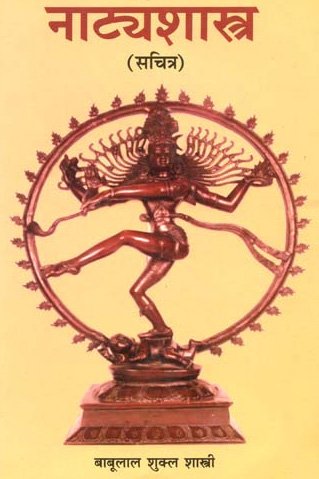
Natyashastra (नाट्यशास्त्र, nāṭyaśāstra) refers to both the ancient Indian tradition (shastra) of performing arts, (natya—theatrics, drama, dance, music), as well as the name of a Sanskrit work dealing with these subjects. It also teaches the rules for composing Dramatic plays (nataka), construction and performance of Theater, and Poetic works (kavya).
Jyotisha (astronomy and astrology)
Source: Wisdom Library: Brihat Samhita by Varahamihira1) Khara (खर) refers to an “ass” (animal), according to the Bṛhatsaṃhitā (chapter 3), an encyclopedic Sanskrit work written by Varāhamihira mainly focusing on the science of ancient Indian astronomy astronomy (Jyotiṣa).—Accordingly, “If at rising and setting the sun should be hid by clouds of the shape of implements of war, he will bring on strife; if these clouds should appear like a deer, a buffalo, a bird, an ass or a young camel [i.e., mṛga-mahiṣa-vihaga-khara-karabha-sadṛśa], mankind will be afflicted with fears. The planets, when subjected to the hot rays of the sun are freed from their impurities just as gold is purified by the action of the fire”.
2) Khara (खर) refers to the thirtieth of the sixty-year cycle of Jupiter, according to the Bṛhatsaṃhitā (chapter 8).—Accordingly, “The first year of the next yuga sacred to Tvaṣṭā is known as Sarvajit. The next year is known as Sarvadhārin. The next three years are—Virodhī, Vikṛta and Khara: in the second of these, mankind will be happy and they will be afflicted with fears in the other years”.
Source: The effect of Samvatsaras: SatvargasKhara (खर) refers to the twenty-fifth saṃvatsara (“jovian year)” in Vedic astrology.—One who is born in the ‘samvatsara’ of ‘khara’ is lustful, dirty in his body, speaker of very harsh and loud words without any reason or purpose, is given to quarrelling, is shameless and possesses a huge body.
According with Jataka Parijata, the person born in the year khara (2011-2012 AD) will be unattractive, worthless, depressed in speech, sinful and mischievous.
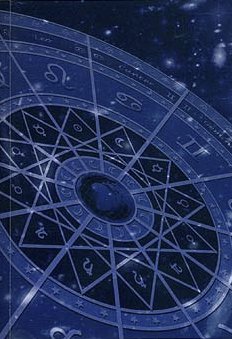
Jyotisha (ज्योतिष, jyotiṣa or jyotish) refers to ‘astronomy’ or “Vedic astrology” and represents the fifth of the six Vedangas (additional sciences to be studied along with the Vedas). Jyotisha concerns itself with the study and prediction of the movements of celestial bodies, in order to calculate the auspicious time for rituals and ceremonies.
Vaishnavism (Vaishava dharma)
Source: Pure Bhakti: Arcana-dipika - 3rd EditionKhara (खर) is the twenty-fifth of sixty years (saṃvatsara) in the Vedic lunar calendar according to the Arcana-dīpikā by Vāmana Mahārāja (cf. Appendix).—Accordingl, There are sixty different names for each year in the Vedic lunar calendar, which begins on the new moon day (Amāvasyā) after the appearance day of Śrī Caitanya Mahāprabhu (Gaura-pūrṇimā), in February or March. The Vedic year [viz., Khara], therefore, does not correspond exactly with the Christian solar calendar year.
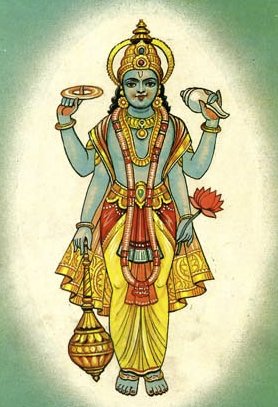
Vaishnava (वैष्णव, vaiṣṇava) or vaishnavism (vaiṣṇavism) represents a tradition of Hinduism worshipping Vishnu as the supreme Lord. Similar to the Shaktism and Shaivism traditions, Vaishnavism also developed as an individual movement, famous for its exposition of the dashavatara (‘ten avatars of Vishnu’).
Dharmashastra (religious law)
Source: Prācyā: Animals and animal products as reflected in Smṛti textsKhara (खर) or Gardhabha refers to the animal “Ass” (Equus hemionus).—The Smṛtis mention several domestic as well as wild animals that are enumerated in context of specifying expiation for killing them, the flesh being used as a dietary article to give satisfaction to the Manes (Pitṛs) in Śrāddha rites, the law of transmigration due to various sins committed as well as in the context of specifying gifts to be given on various occasions. These animals [viz., Khara] are chiefly mentioned in the Manusmṛti, Parāśarasmṛti [Chap.6], Gautamasmṛti [17.2 and 15.1], Śātātapasmṛti [II.45-54], Uśānasmṛti [IX.7-9; IX.12-13], Yājñavalkyasmṛti [I.170-171; I.175; I.258- 260], Viṣṇusmṛti [51.3;51.6;51.26;51.33;80.3-14], Uttarāṅgirasasmṛti [X.15-17], Prajāpatismṛti [Śrāddhatyājyavastuvarṇanam. 138-143], 9 Kāśyapasmṛti [Section on Prāyaścittavarṇanam], Vṛddha Hārītasmṛti [6.253-255] and Kātyāyanasmṛti [27.11].
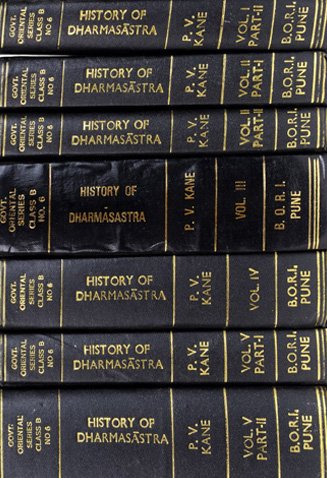
Dharmashastra (धर्मशास्त्र, dharmaśāstra) contains the instructions (shastra) regarding religious conduct of livelihood (dharma), ceremonies, jurisprudence (study of law) and more. It is categorized as smriti, an important and authoritative selection of books dealing with the Hindu lifestyle.
Vastushastra (architecture)
Source: Brill: Śaivism and the Tantric Traditions (architecture)Khara (खर) refers to an “ass”, according to the Devyāmata (in the section śalyoddhāra-paṭala or “excavation of extraneous substances”).—Accordingly, “[...] If a man steps over [a cord], there is a human bone [beneath the site]. If an ass (khara) [intrudes into the site] stepping over [a cord], there is the bone of an ass (kharāsthi) [beneath the site]. In this way, [the officiant] should examine extraneous substances by [the omens] such as stepping over and seeing”.
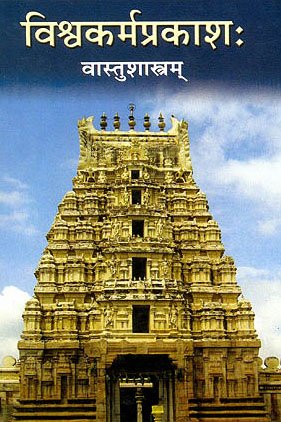
Vastushastra (वास्तुशास्त्र, vāstuśāstra) refers to the ancient Indian science (shastra) of architecture (vastu), dealing with topics such architecture, sculpture, town-building, fort building and various other constructions. Vastu also deals with the philosophy of the architectural relation with the cosmic universe.
Ganitashastra (Mathematics and Algebra)
Source: archive.org: Hindu MathematicsKhara (खर) represents the number 6 (six) in the “word-numeral system” (bhūtasaṃkhyā), which was used in Sanskrit texts dealing with astronomy, mathematics, metrics, as well as in the dates of inscriptions and manuscripts in ancient Indian literature.—A system of expressing numbers by means of words arranged as in the place-value notation was developed and perfected in India in the early centuries of the Christian era. In this system the numerals [e.g., 6—khara] are expressed by names of things, beings or concepts, which, naturally or in accordance with the teaching of the Śāstras, connote numbers.
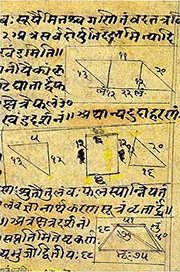
Ganitashastra (शिल्पशास्त्र, gaṇitaśāstra) refers to the ancient Indian science of mathematics, algebra, number theory, arithmetic, etc. Closely allied with astronomy, both were commonly taught and studied in universities, even since the 1st millennium BCE. Ganita-shastra also includes ritualistic math-books such as the Shulba-sutras.
Shaivism (Shaiva philosophy)
Source: SOAS University of London: Protective Rites in the Netra TantraKhara (खर) refers to a “donkey” (i.e., ‘being amongst donkeys in dreams’), according to the Svacchanda-tantra.—Accordingly, [verse 4.21-27, while describing inauspicious dreams]—“[...] [He dreams of] the destruction of houses, palaces, beds, clothes, and seats; defeat of oneself in battle and theft of ones things. [He] ascends or is amongst donkeys (khara), camels, dogs, jackals, and herons, vultures, and cranes. [He rides on] buffalos, owls, and crows, eats cooked meat, [wears a] red garland, and ointment for the body. [...]”

Shaiva (शैव, śaiva) or Shaivism (śaivism) represents a tradition of Hinduism worshiping Shiva as the supreme being. Closely related to Shaktism, Shaiva literature includes a range of scriptures, including Tantras, while the root of this tradition may be traced back to the ancient Vedas.
General definition (in Hinduism)
Source: archive.org: Vedic index of Names and SubjectsKhara (खर, ‘ass’) is mentioned in the Aitareya Āraṇyaka, where a team of asses is alluded to. Probably the passages in the Śatapatha Brāhmaṇa, where the word is used to denote an earth mound on which the sacrificial vessels were placed, presuppose the sense of ‘ ass,’ the mound being shaped in this form.
Source: WikiPedia: HinduismKhara (खर): Khara was younger brother of Rāvana who was slain by Rama.
In Buddhism
Theravada (major branch of Buddhism)
Source: Pali Kanon: Pali Proper NamesA yakkha, friend of Suciloma. He was passing through Gaya with Suciloma when the latter questioned the Buddha on his doctrine, as recorded in the Suciloma Sutta (S.i.207f.; SN., p.47f.; SNA.i.302). Khara had been a monk in a previous birth, and had once rubbed on his body oil belonging to the Sangha without asking the permission of the monks. As a result his body was ugly, and his skin coarse and rough and like a tiled roof. Whenever he wished to frighten anybody his skin would stand up like tiles on a roof. At the end of the recitation of the Suciloma Sutta, Khara became a sotapanna, and his skin became beautiful and golden hued. Ibid., 305.
Theravāda is a major branch of Buddhism having the the Pali canon (tipitaka) as their canonical literature, which includes the vinaya-pitaka (monastic rules), the sutta-pitaka (Buddhist sermons) and the abhidhamma-pitaka (philosophy and psychology).
Tibetan Buddhism (Vajrayana or tantric Buddhism)
Source: OSU Press: Cakrasamvara SamadhiKhara (खर) refers to a “sharp (essence)”, according to the Cakrasaṃvara Samādhi [i.e., Cakrasamvara Meditation] ritual often performed in combination with the Cakrasaṃvara Samādhi, which refers to the primary pūjā and sādhanā practice of Newah Mahāyāna-Vajrayāna Buddhists in Nepal.—Accordingly, “A red twilight, producing a sharp essence (khara-kara-nikarā), an edge as bright as seven suns, A knife killing all enemies, a gleaming immortal striker held by the right arm”.

Tibetan Buddhism includes schools such as Nyingma, Kadampa, Kagyu and Gelug. Their primary canon of literature is divided in two broad categories: The Kangyur, which consists of Buddha’s words, and the Tengyur, which includes commentaries from various sources. Esotericism and tantra techniques (vajrayāna) are collected indepently.
In Jainism
Jain philosophy
Source: archive.org: Anekanta Jaya Pataka of Haribhadra SuriKhara (खर) (Prakrit; in Sanskrit: Khadira) refers to the “Acacia catechu”, as occurring in the Anekāntajayapatākā-prakaraṇa, a Śvetāmbara Jain philosophical work written by Haribhadra Sūri.—[Cf. Vol. I, P. 278, l. 9]—‘Khadira’, a homonym, here means a kind of tree, Acacia catechu, noted in Yājñavalkyasmṛti (1,302). In Gujarati it means khera. Its Pāiya (Prakrit) equivalent ‘khaira’ occurs in Āyāra.
-
General definition (in Jainism)
Source: archive.org: TrisastisalakapurusacaritraKhara (खर) is the son of Meghaprabha, according to the Jain Ramayana and chapter 7.2 [Rāvaṇa’s expedition of conquest] of Hemacandra’s 11th century Triṣaṣṭiśalākāpuruṣacaritra: an ancient Sanskrit epic poem narrating the history and legends of sixty-three illustrious persons in Jainism.
Accordingly, “One day, Daśagrīva went to Mount Meru, riding an elephant, accompanied by his wives, to pay homage to the shrines. Just then a Khecara, Khara, the son of Meghaprabha, saw Candraṇakhā and kidnaped her, having fallen in love with her and she with him. He went to Pātālalaṅkā, expelled King Candrodara, the son of Ādityarajas, and took it himself. When he heard of the kidnaping of Candraṇakhā, Daśakandhara went at once from Meru to Laṅkā and was very angry. Daśānana started out to kill the Khecara, Khara, like an angry lion to hunt an elephant. [...]”.

Jainism is an Indian religion of Dharma whose doctrine revolves around harmlessness (ahimsa) towards every living being. The two major branches (Digambara and Svetambara) of Jainism stimulate self-control (or, shramana, ‘self-reliance’) and spiritual development through a path of peace for the soul to progess to the ultimate goal.
Biology (plants and animals)
Source: Google Books: CRC World Dictionary (Regional names)1) Khara in India is the name of a plant defined with Achyranthes aspera in various botanical sources. This page contains potential references in Ayurveda, modern medicine, and other folk traditions or local practices It has the synonym Centrostachys indica (L.) Standl. (among others).
2) Khara in Ladakhi is also identified with Saccharum officinarum It has the synonym Saccharum officinarum var. tahitense Kunth (etc.).
Example references for further research on medicinal uses or toxicity (see latin names for full list):
· Numer. List (6924)
· Phytotherapy Research (2003)
· Recent Res. Pl. Sci. (1979)
· Taxon (1989)
· Systema Vegetabilium (1817)
· Flora Indica, or ‘Descriptions of Indian Plants’, ed. 1820 (1820)
If you are looking for specific details regarding Khara, for example side effects, diet and recipes, chemical composition, health benefits, pregnancy safety, extract dosage, have a look at these references.

This sections includes definitions from the five kingdoms of living things: Animals, Plants, Fungi, Protists and Monera. It will include both the official binomial nomenclature (scientific names usually in Latin) as well as regional spellings and variants.
Languages of India and abroad
Pali-English dictionary
Source: BuddhaSasana: Concise Pali-English Dictionarykhara : (adj.) rough; hard; sharp; painful. || khāra (m.),alkaline substance; potash.
Source: Sutta: The Pali Text Society's Pali-English Dictionary1) Khara, 2 (Sk. kṣara) water J. III, 282. (Page 235)
2) Khara, 1 (cp. Sk. khara) 1. (adj.) rough, hard, sharp; painful D. II, 127 (ābādha); J. III, 26 (vedanā) Miln. 26 (+sakkhara-kaṭhala-vālikā), PvA. 152 (loma, shaggy hair; cp. Np. Khara-loma-yakkha Vism. 208).—°ka= khara rough, stony PvA. 265 (=thaṇḍila).—2. (m.) a donkey, a mule, in —putta, nickname of a horse J. III, 278.—3. a saw J. II, 230 (=kakaca C.); VI, 261.
— or —
Khāra, (Sk. kṣāra, pungent, saline, sharp to ksā, kṣāyati to burn, cp. Gr. chrόs, dry; Lat. serenus, dry, clear, seresco to dry) any alkaline substance, potash, lye. In combination with ūsa (salt earth) at S. III, 131 (-gandha); A. I, 209.—Used as a caustic Pv III, 102; Sdhp. 281. See also chārikā.

Pali is the language of the Tipiṭaka, which is the sacred canon of Theravāda Buddhism and contains much of the Buddha’s speech. Closeley related to Sanskrit, both languages are used interchangeably between religions.
Marathi-English dictionary
Source: DDSA: The Molesworth Marathi and English Dictionarykhara (खर).—m (S) An ass. 2 f Rubbish, dirt, or feculence of various kinds: e.g. white sediment in leucorhœa; light, fleecy, overspreading clouds, the stratus or cirrostratus; the red diffusion over the evening sky; the rubbish (old grass, leaves, sticks, dung) which is strewn over the loppings laid over ground to be burned; crumbly rock (murūma) or broken stones, or the matter dug up from a well &c. considered as rubbish; particles (of silver or gold) remaining, after fusion, in the ashes or earth; gravel and slime at the bottom of a river; sediment or dreggy matter in water.
--- OR ---
khara (खर).—a Sharp, pungent, pinching, biting-- peppers, heat, cold. 2 Steep, of sharp pitch, approaching to perpendicularity--a bank, a roof, any slope. 3 Exceeding (quasi sharper, smarter, swelling above);--used of measures and weights, as the sher &c. of one place exceeds that of another. 4 Of thick consistency--mud, batter, dough &c.
--- OR ---
kharā (खरा).—a ( H) True. Pr. khaṛyālā maraṇa nāhīṃ Truth has no danger to encounter or evil to fear. 2 Genuine, real, not counterfeit. 3 Good, undebased, unalloyed--coins, the precious metals. 4 True, faithful, honest, ingenuous, not perfidious or fraudulent. 5 Right, exact, true, square--a post, beam &c. prepared or fixed. 6 Complete, full, just, with all the surplusage custom prescribes--a purchase, as of kaḍabā with the pañcōtarī & saḷaī, of mangoes &c. with the percentage of 10, 15, or 20. 7 Fixed, settled, made fast and sure--an agreement &c. v kara.
--- OR ---
kharā (खरा).—m A piece of turmeric, esp. as made red by having been steeped in an acid or as peeled &c., in preparation for kuṅkūṃ. Used therefore with the words haḷakuṇḍa & kuṅkūṃ, as haḷakuṇḍācā kharā or kuṅkavācā kharā. 2 (Sing. of kharē q. v.) A pustule; a jag.
--- OR ---
kharā (खरा).—ad decl ( H) Well; at least; this at least grant or let be. Ex. tū tyālā bulāva tara kharā tō yēō na yēō.
--- OR ---
khāra (खार).—m (kṣāra S) Salt, mineral or vegetable, natural or factitious. 2 Impure alkaline salt obtained by burning plants (esp. aghāḍā or Achyranthes aspera and māṭha or pōkaḷā), boiling the ashes, straining the lixivium, and evaporating the water. 3 Saltness. 4 Briny or acetous liquor for pickling. 5 f Ground recovered from the sea; innings. 6 Fleecy clouds: also the dew which falls whilst the sky is so overspread; viewed as a blight to fruits and grain. v yē, paḍa. 7 Haziness and great coldness of weather, rawness. v suṭa, paḍa, hō. khāra differs from vāmaḷa. This may occur whether in the cold season or during the rains, following upon some heavy fall; that is confined to the cold season. 8 Moisture or dampness from salt (as appearing on the floor or wall). 9 (Commonly khara) Red clouds or red cirrus-diffusion upon the evening sky (esp. as appearing towards the close of the rains. 10 A squirrel, Sciurus palmarum. 11 m A species of serpent. 12 f A salt marsh or meadow. khāra (or padarāsa khāra) lāgaṇēṃ-paḍaṇēṃ-lāvūna ghēṇēṃ To sustain a loss or calamity. 2 To contract a slur or stigma. khāra (or padarāsa khāra) lāvaṇēṃ To occasion unto an expense, a loss, or a calamity.
--- OR ---
khārā (खारा).—a (khāra) Salt or saline. 2 Produced on salt marshes or grounds--a kind of rice &c. 3 Existing in salt water--fish. 4 Blowing over creeks or salt marshes--wind. 5 Hard, containing salts--water.
Source: DDSA: The Aryabhusan school dictionary, Marathi-Englishkhara (खर).—m An ass. f Dirt; white sediment in leucorrhœa. a Steep; sharp.
--- OR ---
kharā (खरा).—a True, genuine, good. ad At least; well. m A piece of turmeric in preparation for kuṅkūṃ. A jag.
--- OR ---
khāra (खार).—m Salt; saltness. f A squirrel. Dew. Innings. Rawness. khāra lāvaṇēṃ Sustain a loss or calamity; contract a stigma.
--- OR ---
khārā (खारा).—a Salt or saline; existing in salt water.
Marathi is an Indo-European language having over 70 million native speakers people in (predominantly) Maharashtra India. Marathi, like many other Indo-Aryan languages, evolved from early forms of Prakrit, which itself is a subset of Sanskrit, one of the most ancient languages of the world.
Sanskrit dictionary
Source: DDSA: The practical Sanskrit-English dictionaryKhara (खर).—a. [opp. मृदु, श्लक्ष्ण, द्रव (mṛdu, ślakṣṇa, drava))
1) Hard, rough, solid.
2) Severe, sharp, strict, R.8.9; स्मरः खरः खलः कान्तः (smaraḥ kharaḥ khalaḥ kāntaḥ) Kāv.1.59.
3) Pungent, acid.
4) Dense, thick.
5) Hurtful, injurious, cutting, smart (words).
6) Sharpedged; देहि खरनयनशस्घातम् (dehi kharanayanaśasghātam) Gītagovinda 1.
7) Hot; खरांशुः (kharāṃśuḥ) &c.
8) Cruel; Rām.6.59.17.
-raḥ 1 An ass, Manusmṛti 2.21; 4.115,12,8.37; Y.2.16.
2) A mule.
3) A heron.
4) A crow.
5) A kind of prickly nightshade.
6) A quadrangular mound of earth for receiving the sacrificial vessels.
7) A Daitya or demon in general
8) An attendant of (a) Sūrya, (b) Śiva.
9) Name of a demon, half-brother of Rāvaṇa and slain by Rāma; R.12.42.
1) Name of the 25th year of the sixty years cycle; खरो बालेयवर्षयोः (kharo bāleyavarṣayoḥ) Nm.
-ram ind. In a sharp way; Rām.3.
--- OR ---
Khāra (खार).—f. A measure of grain equal to 16 droṇas. [ 4 मुष्टि (muṣṭi)s = 1 निष्टिका (niṣṭikā); 2 निष्टिका (niṣṭikā)s = 1 अष्टिका (aṣṭikā); 2 अष्टिका (aṣṭikā)s = 1 कुडव (kuḍava); 4 कुटव (kuṭava)s = 1 प्रस्थ (prastha); 4 प्रस्थ (prastha)s = 1 आढकी (āḍhakī); 4 आढकी (āḍhakī)s = 1 द्रोण (droṇa); 16 or 2 द्रोण (droṇa)s = 1 खारी (khārī).] खारीशतसहस्रेण धान्यैनापूरितौ ततः (khārīśatasahasreṇa dhānyaināpūritau tataḥ) Parṇāl.4.73; Pañcatantra (Bombay) 4.26.
-rī A scar.
Derivable forms: khāraḥ (खारः).
See also (synonyms): khāri.
Source: Cologne Digital Sanskrit Dictionaries: Edgerton Buddhist Hybrid Sanskrit DictionaryKhara (खर).—nt., name of a hamlet: Divyāvadāna 577.11.
Source: Cologne Digital Sanskrit Dictionaries: Shabda-Sagara Sanskrit-English DictionaryKhara (खर).—mfn.
(-raḥ-rā-raṃ) 1. Hot. 2. Sharp, pungent. 3. Sharp, sharp-edged, cutting. 4. Cruel, harsh. mn.
(-raḥ-raṃ) Heat. m.
(-raḥ) 1. An ass. 2. A Rakshasa, the brother of Ravana. 3. A Daitya or demon in general. 4. A sort of prickly nightshade. 5. A crow. 6. A heron. 7. An osprey. f.
(-rā) A kind of grass, (Andropogon serratus. E. kha an organ of sense, and rā to get or give, affix ka.
--- OR ---
Khāra (खार).—mf. (-raḥ-riḥ or -rī) A K'hari, a measure of grain containing sixteen Dronas, or about three bushels: it is also reckoned at three or four Dronas; also at five Gonis, which is considered equal to 512 Ser's f. (-rī) A scar. E. khan to dig, deriv. irr.
Source: Cologne Digital Sanskrit Dictionaries: Benfey Sanskrit-English DictionaryKhara (खर).—I. adj. 1. Solid, [Suśruta] 2, 176, 12. 2. Pointed (?), [Rāmāyaṇa] 6, 87, 3. 3. Sharp, [Suśruta] 1, 76, 14. 4. Hoarse, [Rāmāyaṇa] 3, 28, 42. 5. Hot, Cāt. 7. Ii. ram, adv. Hoarsely, [Rāmāyaṇa] 3, 29, 9. Iii. m. 1. An ass, [Mānavadharmaśāstra] 2, 201. 2. A proper name, [Rāmāyaṇa] 1, 1, 45.
Source: Cologne Digital Sanskrit Dictionaries: Cappeller Sanskrit-English DictionaryKhara (खर).—[adjective] harsh, rough, sharp, piercing; [neuter] [adverb]
— [masculine] ass, mule, [feminine] kharī.
--- OR ---
Khāra (खार).—[masculine] khārī [feminine] a cert. measure of grain.
Source: Cologne Digital Sanskrit Dictionaries: Monier-Williams Sanskrit-English Dictionary1) Khara (खर):—mf(ā)n. hard, harsh, rough, sharp, pungent, acid (opposed to mṛdu and ślakṣṇa), [Mahābhārata; Rāmāyaṇa] etc.
2) solid (opposed to drava, fluid), [Pāṇini 7-3, 69; Patañjali; Kāśikā-vṛtti on Pāṇini 2-1, 35 and iv, 2, 16]
3) dense (clouds), [Rāmāyaṇa vi, 87, 3]
4) sharp, hot (wind), [Suśruta i, 20, 22]
5) hurtful, injurious, cutting (as speech or word), [Mahābhārata; Rāmāyaṇa] etc.
6) sharp-edged, [cf. Lexicographers, esp. such as amarasiṃha, halāyudha, hemacandra, etc.]
7) cruel, [Horace H. Wilson]
8) m. a donkey (so called from his cry), [Kātyāyana-śrauta-sūtra; Manu-smṛti; Mahābhārata] etc.
9) a mule, [cf. Lexicographers, esp. such as amarasiṃha, halāyudha, hemacandra, etc.]
10) an osprey, [cf. Lexicographers, esp. such as amarasiṃha, halāyudha, hemacandra, etc.]
11) a heron, [cf. Lexicographers, esp. such as amarasiṃha, halāyudha, hemacandra, etc.]
12) a crow, [cf. Lexicographers, esp. such as amarasiṃha, halāyudha, hemacandra, etc.]
13) a thorny plant (sort of prickly nightshade or perhaps Alhagi Maurorum), [cf. Lexicographers, esp. such as amarasiṃha, halāyudha, hemacandra, etc.]
14) Name of a fragrant substance, [Demetrius Galanos’s Lexiko: sanskritikes, anglikes, hellenikes]
15) a quadrangular mound of earth for receiving the sacrificial vessels (cf. ἐσχάρα), [Śatapatha-brāhmaṇa v, 1, 2, 15]
16) [xiv; Āśvalāyana-śrauta-sūtra; Kātyāyana-śrauta-sūtra]
17) a place arranged for building a house upon, Name of the 25th year of the sixty years' Bṛhaspati cycle, [Varāha-mihira’s Bṛhat-saṃhitā]
18) a Daitya or demon, [cf. Lexicographers, esp. such as amarasiṃha, halāyudha, hemacandra, etc.]
19) Name of the Asura Dhenuka, [Harivaṃśa 3114; Bhāgavata-purāṇa ii, 7, 34]
20) Name of a Rakṣas slain by Rāma (younger brother of Rāvaṇa), [Mahābhārata iii, 15896; Rāmāyaṇa; Bhāgavata-purāṇa; Raghuvaṃśa]
21) Name of an attendant [of the Sun (= Dharma), [cf. Lexicographers, esp. such as amarasiṃha, halāyudha, hemacandra, etc.]; of Śiva, [cf. Lexicographers, esp. such as amarasiṃha, halāyudha, hemacandra, etc.]]
22) of a Rudra (?), [Harivaṃśa] ([varia lectio])
23) Kharā (खरा):—[from khara] f. Andropogon serratus, [cf. Lexicographers, esp. such as amarasiṃha, halāyudha, hemacandra, etc.]
24) Khāra (खार):—m. (ifc. [Pāṇini 5-4, 101]) a measure of grain (commonly Khāri, = 18 Droṇas or about 3 bushels; it is also reckoned at 1 1/2 Śūrpa or 3 Droṇas; also at 46 Gauṇīs or 4096 Palas, or at 4 Droṇas), [Pāṇini 2-3, 46 [Scholiast or Commentator]] (rī, [Kāśikā-vṛtti])
Source: Cologne Digital Sanskrit Dictionaries: Yates Sanskrit-English Dictionary1) Khara (खर):—[kha-ra] (raḥ-rā-raṃ) a. Hot; sharp; cruel. 1. m. n. Heat. m. An ass; imp; crow; heron; osprey. f. Kind of grass (Andropogon serratus).
2) Khāra (खार):—[(raḥ-riḥ)] 1. 2. m. Khāri, 16 dronas, about 3 bushels. (rī) f. A scar.
Source: DDSA: Paia-sadda-mahannavo; a comprehensive Prakrit Hindi dictionary (S)Khara (खर) in the Sanskrit language is related to the Prakrit words: Khara, Kharā.
[Sanskrit to German]
Sanskrit, also spelled संस्कृतम् (saṃskṛtam), is an ancient language of India commonly seen as the grandmother of the Indo-European language family (even English!). Closely allied with Prakrit and Pali, Sanskrit is more exhaustive in both grammar and terms and has the most extensive collection of literature in the world, greatly surpassing its sister-languages Greek and Latin.
Hindi dictionary
Source: DDSA: A practical Hindi-English dictionary1) Kharā (खरा):—(a) pure, genuine; straightforward; upright; honest; plain-speaking; overhot (e. g. [kharā tavā, kharī āṃca]); crisp; —[āsāmī] a good paymaster; a straightforward person; —[utaranā] to hold water, to bear examination; —[kahaiyā] a plain-speaking man; —[khela] genuine straightforward dealings; —[khela pharrūkhābādī] straightforward undaunted dealings/conduct, calling a spade a spade; —[khoṭā] good and bad, genuine and spurious; —[dāma acchā kāma] good wages good work; —[parakhanā] to distinguish good from bad, to discriminate between good and bad; —[sikkā] a good coin.
2) Khāra (खार) [Also spelled khar]:—(nm) a rainy rivulet.
3) Khāra (खार) [Also spelled khar]:—(nm) a thorn; animosity, rancour; —[khānā] to nurse a spirit of rancour (against), to have a sense of animosity; to be in readiness to take revenge.
4) Khārā (खारा):—(a) brackish; saline, salty; ~[pana] salinity; brakishness; hence [khārī].
...
Prakrit-English dictionary
Source: DDSA: Paia-sadda-mahannavo; a comprehensive Prakrit Hindi dictionary1) Khara (खर) in the Prakrit language is related to the Sanskrit word: Kṣar.
2) Khara (खर) also relates to the Sanskrit word: Khara.
3) Khara (खर) also relates to the Sanskrit word: Kṣara.
4) Kharā (खरा) also relates to the Sanskrit word: Kharā.
5) Khāra (खार) also relates to the Sanskrit word: Kṣāra.
6) Khāra (खार) also relates to the Sanskrit word: Kṣāra.
Prakrit is an ancient language closely associated with both Pali and Sanskrit. Jain literature is often composed in this language or sub-dialects, such as the Agamas and their commentaries which are written in Ardhamagadhi and Maharashtri Prakrit. The earliest extant texts can be dated to as early as the 4th century BCE although core portions might be older.
Kannada-English dictionary
Source: Alar: Kannada-English corpusKhara (ಖರ):—
1) [adverb] excessively; abundantly.
2) [adverb] specially; mainly; to a marked degree; especially.
--- OR ---
Khara (ಖರ):—
1) [adjective] not easily dented, pierced, cut or crushed; resistant to pressure; firm and unyielding to the touch; rough; rigid; solid; hard; harsh.
2) [adjective] able to cut or pierce (an object with ease); sharp.
3) [adjective] severe; intense.
4) [adjective] sharp and biting to the taste; acid; pungent.
5) [adjective] hot a) having a high temperature, esp. one that is higher than that of the human body; b) characterised by a relatively or abnormally high temperature; very warm; c) feeling uncomfortably overheated.
--- OR ---
Khara (ಖರ):—
1) [noun] the offspring of a donkey and a horse; a mule.
2) [noun] an ass.
3) [noun] a person belonging to the mythological class of beings, characterised by cruel mind, abnormally great growth of the body and brutal strength.
4) [noun] the twenty fifth year in the sixty-years cycle of Hindus.
5) [noun] the symbol for the number six.
6) [noun] a crow.
7) [noun] any of various wading birds (esp. subfamily Ardeinae) with a long neck, long legs, and a long, tapered bill, living along marshes and river banks; a heron.
--- OR ---
Khāra (ಖಾರ):—
1) [noun] the taste that produces a burning sensation in the mouth, throat, etc.
2) [noun] sodium chloride, NaCl, a white, crystalline substance with a characteristic taste, found in natural beds, in sea water, etc., and used for seasoning and preserving foods, etc.; common salt.
3) [noun] (fig.) anger; wrath; fury.
--- OR ---
Khāra (ಖಾರ):—[noun] a kind of rough, red cloth.
Kannada is a Dravidian language (as opposed to the Indo-European language family) mainly spoken in the southwestern region of India.
Nepali dictionary
Source: unoes: Nepali-English Dictionary1) Khara (खर):—n. Bot. elephant grass; adj. harsh; rough; crude; coarse;
2) Kharā (खरा):—adj. pl. of खरो [kharo]
3) Khāra (खार):—n. 1. an alkali; potash; caustic potash/soda; 2. pungent fumes from burning chili/other things; 3. saline land/soil; 4. rancor; envy; jealousy;
4) Khāra (खार):—n. Bot. elephant grass; lesser cat's tail;
Nepali is the primary language of the Nepalese people counting almost 20 million native speakers. The country of Nepal is situated in the Himalaya mountain range to the north of India.
See also (Relevant definitions)
Starts with (+358): Khara maithi, Khara-jaal, Khara-jal, Khara-Kana-Kara-Dishi, Kharaane, Kharaba, Kharabada, Kharabadanem, Kharabandhura, Kharabarita, Kharabath, Kharabatte, Kharabaum, Kharabdankuraka, Kharabele, Kharabhara, Kharabi, Kharabu, Kharabuja, Kharabuji.
Ends with (+348): Abakhara, Abhisankhara, Acarendushekhara, Advaitamukhara, Agnishekhara, Aindushekhara, Akarkhara, Akhara, Akharanakhara, Akkalakara-Kara-Kada-Kadha-Kala-Khara, Akkhara, Alamkarashekhara, Alamkarendushekhara, Alobukhara, Alu-bukhara, Alubukhara, Ambasakkhara, Amukhara, Anakhara, Anakkhara.
Full-text (+364): Kharadhvamsin, Kharamshu, Kharapriya, Kharadala, Kharamanjari, Kharapatra, Kharanas, Khari, Kharashatika, Kharya, Kharavallika, Prakhara, Kharasahasrika, Kshara, Kharika, Kharadushana, Kharashala, Kharayana, Kharashva, Kharadanda.
Relevant text
Search found 73 books and stories containing Khara, Khāra, Kharā, Khārā, Kha-ra; (plurals include: Kharas, Khāras, Kharās, Khārās, ras). You can also click to the full overview containing English textual excerpts. Below are direct links for the most relevant articles:
Vakyapadiya of Bhartrihari (by K. A. Subramania Iyer)
Verse 3.14.39 < [Book 3 - Pada-kāṇḍa (14): Vṛtti-samuddeśa (On Ccomplex Formation)]
Guhyagarbha Tantra (with Commentary) (by Gyurme Dorje)
Text 16.9 (Commentary) < [Chapter 16 (Text and Commentary)]
Chapter 16 - Emanation of the Maṇḍala of Buddha-speech < [Chapter 16 (Text and Commentary)]
Introduction: Overview of the Mantras of Buddha-Speech < [Chapter 16 (Text and Commentary)]
Garga Samhita (English) (by Danavir Goswami)
Verse 2.11.14 < [Chapter 11 - The Liberation of Dhenukāsura]
Verses 2.11.16-17 < [Chapter 11 - The Liberation of Dhenukāsura]
Verse 2.11.21 < [Chapter 11 - The Liberation of Dhenukāsura]
Mudrarakshasa (literary study) (by Antara Chakravarty)
2.15. Use of Suvadanā metre < [Chapter 4 - Employment of Chandas in Mudrārākṣasa]
Bhakti-rasamrta-sindhu (by Śrīla Rūpa Gosvāmī)
Verse 2.1.318 < [Part 1 - Ecstatic Excitants (vibhāva)]
Verse 2.4.68 < [Part 4 - Transient Ecstatic Disturbances (vyābhicāri-bhāva)]
Chaitanya Bhagavata (by Bhumipati Dāsa)
Verse 3.3.27 < [Chapter 3 - Mahāprabhu’s Deliverance of Sarvabhauma, Exhibition of His Six-armed Form, and Journey to Bengal]
Verse 3.4.320 < [Chapter 4 - Descriptions of Śrī Acyutānanda’s Pastimes and the Worship of Śrī Mādhavendra]
Verse 2.15.62 < [Chapter 15 - Descriptions of Mādhavānanda’s Realization]
Related products
